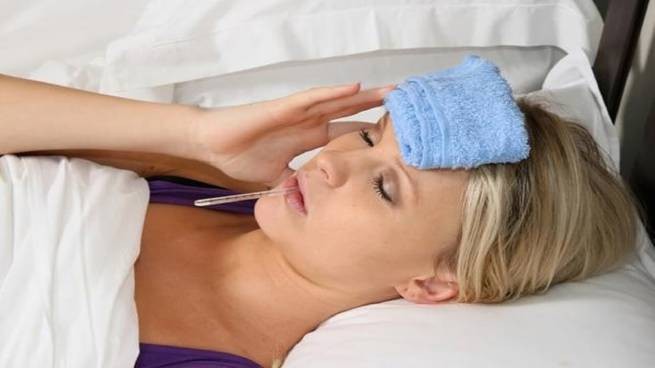There is bright sunshine outside and almost 40-degree heat, but viruses are not asleep: a sore throat suddenly appears, the mercury column confidently creeps up, but the fever is especially annoying.
Not long ago it was considered an independent disease. However, It would be more correct to call fever not a disease, but a conditionaccompanying many illnesses and causing significant discomfort. Depending on the causes that caused it, care for feverish patients has its own characteristics.
Periodicity and characteristics of fever
The causes of this unpleasant abnormal condition can be infections and allergies, injuries and thrombosis, diseases of internal organs and necrosis.. Proper care of febrile patients depends on the duration and frequency of fever attacks, and each step requires special care for patients:
- Gradual increase in temperature accompanied by headache, chills, and poor health. Strong tea, a hot water bottle, and a blanket help relieve the feverish syndrome.
- Very high temperature requires the constant presence of someone nearby, care for a patient with fever comes down to careful observation of his condition. The temperature peak is accompanied by weakness, a feeling of heat, dry mouth, signs of toxic effects, and sometimes even convulsions. It is important to monitor the pulse and blood pressure, provide plenty of fluids, put a vinegar compress on the forehead. During this period, the features of hygienic care for fever are aimed at alleviating the severe condition – dry lips can be lubricated with any fat, and wiping with a water-soda solution helps well with dry mouth.
- Rapid drop in temperature can be extremely dangerous. Its gradual decrease does not cause any particular inconvenience, manifesting itself only in excessive weakness, and the patient falls asleep with relief. However, in the case of a sharp drop in high numbers on the thermometer to 36°-36.2°, observation of the patient should be as responsible as possible. It is necessary to pay attention to the possible presence of dangerous signs:
- cyanosis of the lips;
- icy feet;
- weakness and profuse sweating;
- shallow, rapid breathing;
- rare pulse beat;
- a sharp decrease in blood pressure readings.
The last two signs require an immediate call to the doctor, and before he arrives, you need to try to help the patient – cover him up and warm him up with heating pads, give him strong tea. Hygienic care for the patient at this stage consists of wiping the body, changing wet linen, and ensuring bed rest. Getting out of bed before the specialist arrives is not recommended.
Help from a caregiver
Prolonged fever has an extremely negative effect on the body and has dangerous consequences. Constant observation, attention and hygienic care for febrile patients is especially important for elderly patients, who sometimes require attention around the clock. Constant stay in such a state determines the peculiarities of care for feverish patients, which a professional nurse will help to provide:
- regular monitoring of blood pressure, temperature, and pulse;
- daily hygiene, complete or partial sanitary care depends on the severity of the patient's condition;
- prevention or treatment of bedsores;
- feeding in compliance with the prescribed diet.
Knowing how to provide first aid is a specific aspect of caring for patients with fever. Try not to leave the patient unattended, and if this is not possible, use the help of professionals who will provide your loved one with careful and reliable care during a fever.







More Stories
You will be surprised to learn about the benefits of this popular sweet.
Snacks – good or bad, what foods can be harmful
Farmer Throws Six Tons of Green Olives Out on the Street